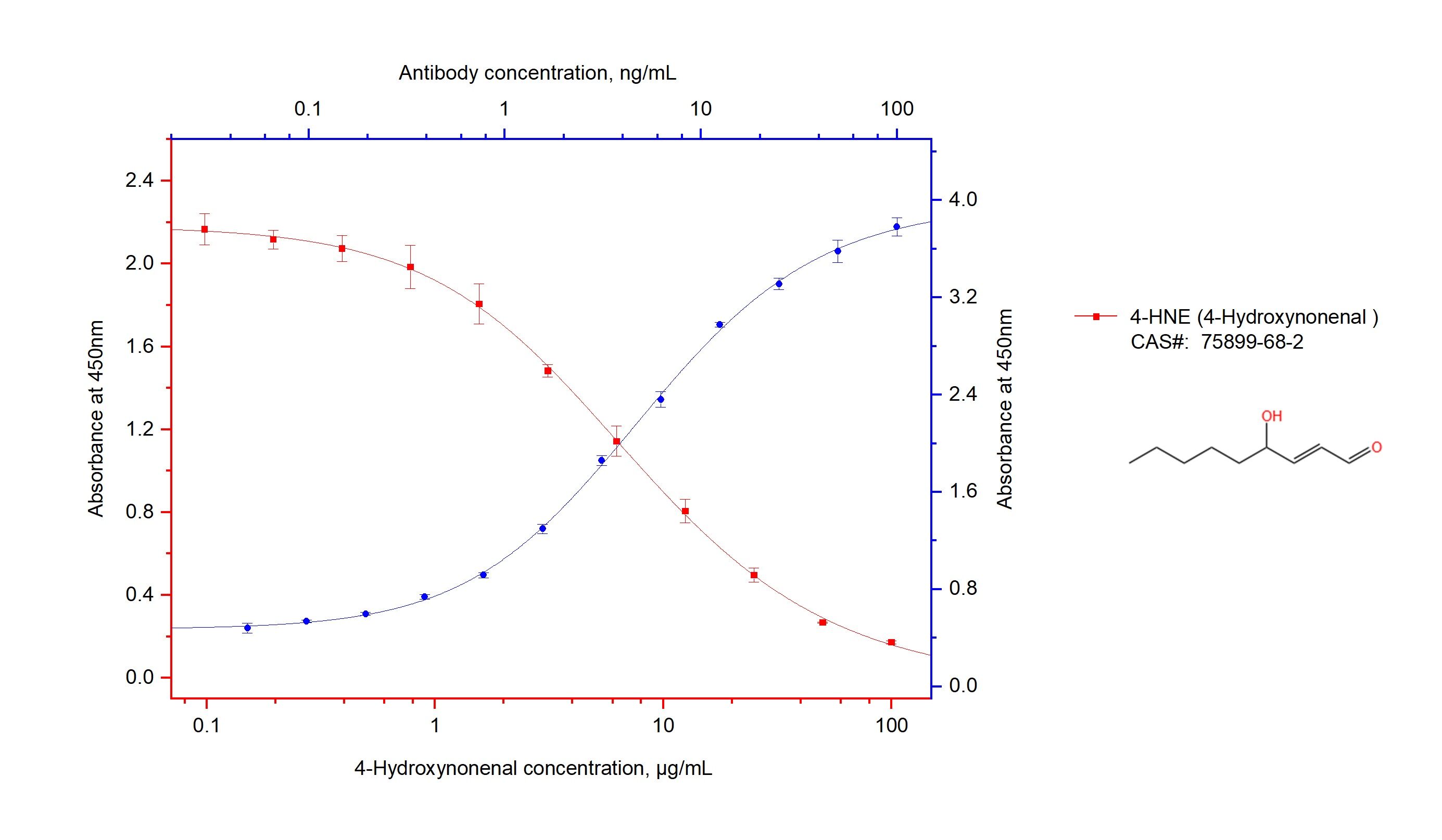验证数据展示
经过测试的应用
| Positive ELISA detected in | 4-Hydroxynonenal |
推荐稀释比
| 应用 | 推荐稀释比 |
|---|---|
| Enzyme-linked Immunosorbent Assay (ELISA) | ELISA : 1:5000-1:20000 |
| It is recommended that this reagent should be titrated in each testing system to obtain optimal results. | |
| Sample-dependent, Check data in validation data gallery. | |
发表文章中的应用
| IHC | See 1 publications below |
产品信息
68538-1-Ig targets 4-Hydroxynonenal in IHC, ELISA applications and shows reactivity with 4-hydroxynonenal, chemical compound samples.
| 经测试应用 | ELISA Application Description |
| 文献引用应用 | IHC |
| 经测试反应性 | 4-hydroxynonenal, chemical compound |
| 文献引用反应性 | mouse |
| 免疫原 | PTG 种属同源性预测 |
| 宿主/亚型 | Mouse / IgG2a |
| 抗体类别 | Monoclonal |
| 产品类型 | Antibody |
| 全称 | 4-Hydroxynonenal |
| 别名 | Cas. 75899-68-2, C9H16O2, 4-Hydroxy-2-nonenal, 4-HNE |
| 基因名称 | |
| Gene ID (NCBI) | |
| RRID | AB_3085246 |
| 偶联类型 | Unconjugated |
| 形式 | Liquid |
| 纯化方式 | Protein A purification |
| 储存缓冲液 | PBS with 0.02% sodium azide and 50% glycerol , pH 7.3 |
| 储存条件 | Store at -20°C. Stable for one year after shipment. Aliquoting is unnecessary for -20oC storage. |
背景介绍
4-Hydroxynonenal is a uremic toxin. Uremic toxins can be subdivided into three major groups based upon their chemical and physical characteristics: 1) small, water-soluble, non-protein-bound compounds, such as urea; 2) small, lipid-soluble and/or protein-bound compounds, such as the phenols and 3) larger so-called middle-molecules, such as beta2-microglobulin. 4-Hydroxynonenal (4-HNE) is a major aldehydic product of ω-6-unsaturated fatty acid peroxidation. It is considered a lipid peroxidation specific marker. 4-HNE has been found to induce differentiation and inhibit proliferation of HL-60 human leukemic cells. It has also been found to induce murine alveolar macrophage cell death. 4-HNE has been shown to inhibit State 3 respiration, causing a transient cytosolic Ca2+ increase. In addition, it irreversibly inhibits Na+-K+-ATPase activity.
